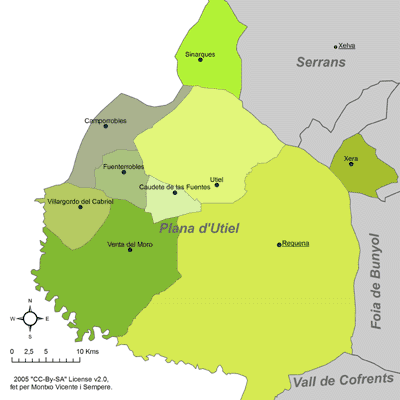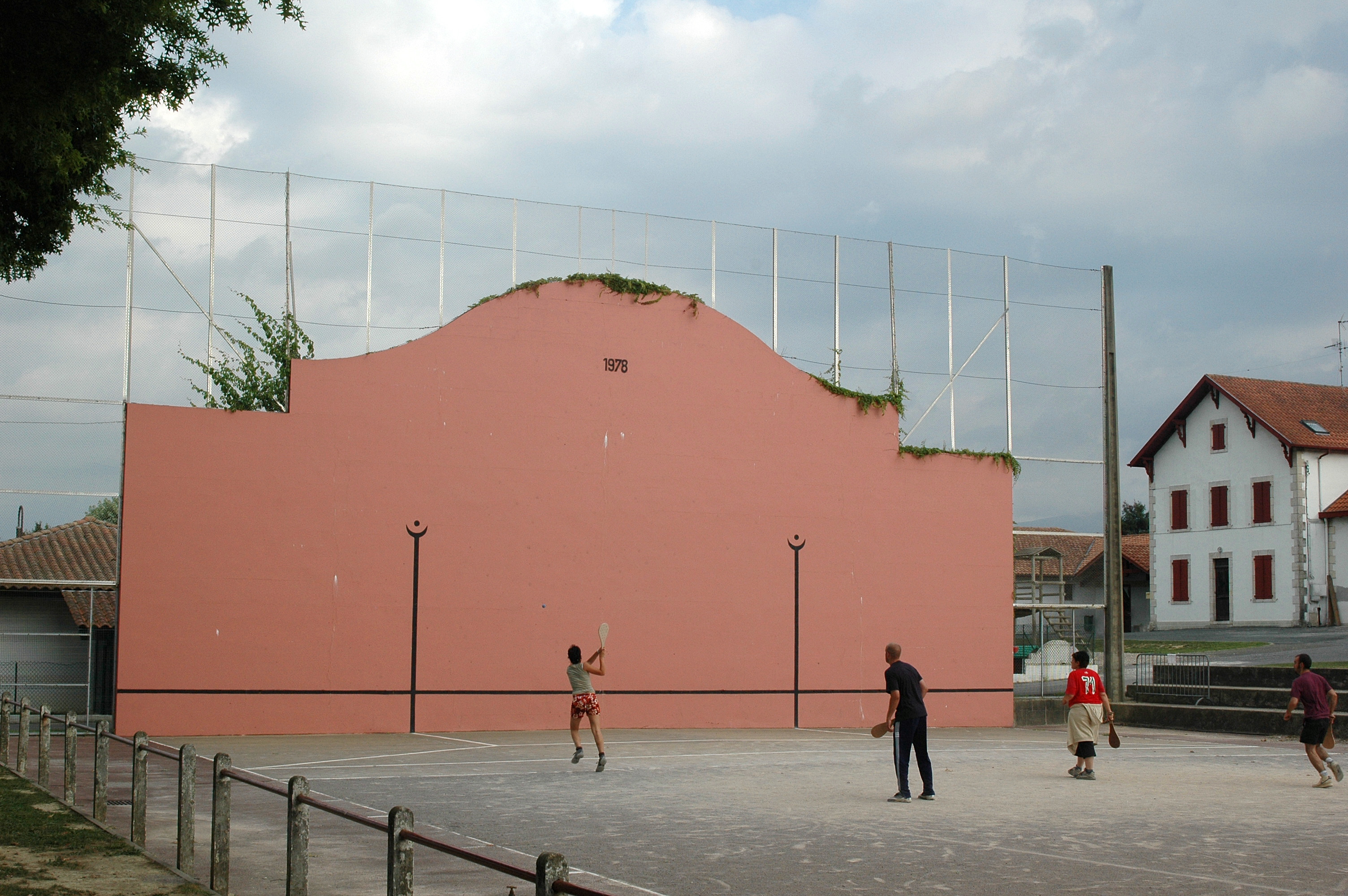|
Sinarcas
Sinarcas is a municipality in the Valencian Community (province of Valencia) and is located about one hour's drive inland from the city of Valencia. Primarily an agricultural town, local produce includes grapes, lavender and wheat. There is also a large battery chicken egg production locally. Geography The area is surrounded by pine forest and mediterranean scrub including lavender on the hillsides and gets very dry in the Summer. The altitude is around 1000 m and so it is consequently relatively cool in Summer compared with more coastal locations. This sleepy town has suffered from the emigration of the younger demographic to towns where there is more work to be found. Cuisine Local specialities include casseroled Lamb knees and a heavy soup containing home-made pasta and beans. Places of note in the area and things to do * Las Vinuelas is a privately owned and run hostel and activity centre. It has a swimming pool, archery facilities, frontoncourt, climbing wall and ca ... [...More Info...] [...Related Items...] OR: [Wikipedia] [Google] [Baidu] |
Requena-Utiel
La Plana de Utiel-Requena is a ''comarca'' currently in the province of Valencia Valencia ( va, València) is the capital of the Autonomous communities of Spain, autonomous community of Valencian Community, Valencia and the Municipalities of Spain, third-most populated municipality in Spain, with 791,413 inhabitants. It is ..., Valencian Community, Spain. Historically, the ''comarca'' was part of Castile (historical region), Castile and formed part of the province of Cuenca in the 1833 territorial division of Spain, 1833 provincial division of Javier de Burgos. As such, its inhabitants have been traditionally monolingual in Spanish language, Spanish and not Valencian language, Valencian- speakers. However, in 1851 it was merged into the province of Valencia, as a result of its commercial ties with the city of Valencia, Spain, Valencia. Chera, Valencia, Chera, now officially included in Requena-Utiel according to the current administrative division pattern of the Valencian Com ... [...More Info...] [...Related Items...] OR: [Wikipedia] [Google] [Baidu] |
Municipalities Of Spain
The municipality ( es, municipio, , ca, municipi, gl, concello, eu, udalerria, ast, conceyu)In other languages of Spain: * Catalan/Valencian (), sing. ''municipi''. * Galician () or (), sing. ''municipio''/''bisbarra''. *Basque (), sing. ''udalerria''. * Asturian (), sing. ''conceyu''. is the basic local administrative division in Spain together with the province. Organisation Each municipality forms part of a province which in turn forms part or the whole of an autonomous community (17 in total plus Ceuta and Melilla): some autonomous communities also group municipalities into entities known as ''comarcas'' (districts) or ''mancomunidades'' (commonwealths). There are a total of 8,131 municipalities in Spain, including the autonomous cities of Ceuta and Melilla. In the Principality of Asturias, municipalities are officially named ''concejos'' (councils). The average population of a municipality is about 5,300, but this figure masks a huge range: the most populo ... [...More Info...] [...Related Items...] OR: [Wikipedia] [Google] [Baidu] |
Valencian Community
The Valencian Community ( ca-valencia, Comunitat Valenciana, es, Comunidad Valenciana) is an autonomous community of Spain. It is the fourth most populous Spanish autonomous community after Andalusia, Catalonia and the Community of Madrid with more than five million inhabitants.Instituto Nacional de Estadística, Madrid, 2020. Its homonymous capital Valencia is the third largest city and metropolitan area in Spain. It is located along the Mediterranean coast on the east side of the Iberian Peninsula. It borders with Catalonia to the north, Aragon and Castilla–La Mancha to the west, and Murcia to the south, and the Balearic Islands are to its east. The Valencian Community consists of three provinces which are Castellón, Valencia and Alicante. According to Valencia's Statute of Autonomy, the Valencian people are a ''nationality''. Their origins date back to the 1238 Aragonese conquest of the Taifa of Valencia. The newly-founded Kingdom of Valencia enjoyed its own legal entit ... [...More Info...] [...Related Items...] OR: [Wikipedia] [Google] [Baidu] |
Benagéber
Benagéber is a municipality in the ''comarca'' of Los Serranos in the Valencian Community, Spain. See also *Sierra de Utiel Sierra de Utiel ( ca-valencia, Serra d'Utiel) is a long mountain range in the Alt Palància, Alt Millars and Plana Baixa comarcas, Valencian Community, Spain. Its highest point is the 1,306 m high El Remedio ( ca-valencia, El Remei). There is oft ... References Los Serranos Municipalities in the Province of Valencia {{valencia-geo-stub ... [...More Info...] [...Related Items...] OR: [Wikipedia] [Google] [Baidu] |
Canyoning
Canyoning (canyoneering in the United States, kloofing in South Africa) is a type of mountaineering that involves travelling in canyons using a variety of techniques that may include other outdoor activities such as walking, scrambling, climbing, jumping, abseiling (rappelling), and swimming. Although non-technical descents such as hiking down a canyon (''canyon hiking'') are often referred to as ''canyoneering'', the terms ''canyoning'' and ''canyoneering'' are more often associated with technical descents — those that require abseils (rappels) and ropework, technical climbing or down-climbing, technical jumps, and/or technical swims. Canyoning is frequently done in remote and rugged settings and often requires navigational, route-finding, and other wilderness travel skills. Canyons that are ideal for canyoning are often cut into the bedrock stone, forming narrow gorges with numerous drops, beautifully sculpted walls, and sometimes spectacular waterfalls. Most canyo ... [...More Info...] [...Related Items...] OR: [Wikipedia] [Google] [Baidu] |
Watersports
Water sports or aquatic sports are sport activities conducted on waterbodies, and can be categorized according to the degree of immersion by the participants. On the water * Boat racing, the use of powerboats to participate in races * Boating, the use of boats for personal recreation * Cable skiing, similar to wake boarding but with cables for artificial maneuvering * Canoe polo combines boating and ball handling skills with a contact team game, where tactics and positional play are as important as the speed and fitness of the individual athletes. * Canoeing is an activity which involves paddling a canoe with a single-bladed paddle. Most present-day canoeing is done as or as a part of a sport or recreational activity. * Dragon boat racing, teams of 20 paddlers racing the ancient dragon boat * Fishing, the recreation and sport of catching fish * Flyboard, a brand of hydroflighting device which supplies propulsion to drive the Flyboard into the air to perform a sport known as ... [...More Info...] [...Related Items...] OR: [Wikipedia] [Google] [Baidu] |
Church (building)
A church, church building or church house is a building used for Christian worship services and other Christian religious activities. The earliest identified Christian church is a house church founded between 233 and 256. From the 11th through the 14th centuries, there was a wave of church construction in Western Europe. Sometimes, the word ''church'' is used by analogy for the buildings of other religions. ''Church'' is also used to describe the Christian religious community as a whole, or a body or an assembly of Christian believers around the world. In traditional Christian architecture, the plan view of a church often forms a Christian cross; the center aisle and seating representing the vertical beam with the Church architecture#Characteristics of the early Christian church building, bema and altar forming the horizontal. Towers or domes may inspire contemplation of the heavens. Modern churches have a variety of architectural styles and layouts. Some buildings designe ... [...More Info...] [...Related Items...] OR: [Wikipedia] [Google] [Baidu] |
Horse Riding
Equestrianism (from Latin , , , 'horseman', 'horse'), commonly known as horse riding (Commonwealth English) or horseback riding (American English), includes the disciplines of riding, Driving (horse), driving, and Equestrian vaulting, vaulting. This broad description includes the use of horses for practical working animal, working purposes, transportation, recreational activities, artistic or cultural exercises, and animals in sport, competitive sport. Overview of equestrian activities Horses are horse training, trained and ridden for practical working purposes, such as in Mounted police, police work or for controlling herd animals on a ranch. They are also used in Horse#Sport, competitive sports including dressage, endurance riding, eventing, reining, show jumping, tent pegging, equestrian vaulting, vaulting, polo, horse racing, driving (horse), driving, and rodeo (see additional equestrian sports listed later in this article for more examples). Some popular forms of competi ... [...More Info...] [...Related Items...] OR: [Wikipedia] [Google] [Baidu] |
Fronton (court)
A fronton ( es, frontón; eu, frontoi or ; french: fronton) is a two-walled or single-walled court used as a playing area for Basque pelota. History The front wall of the first frontons in villages was usually the wall of a church. Because the games being played close by, several priests would play pelota along with the villagers and got to be well-known players and often served as referees in provincial or town competitions but were out of the picture when it turned into a commercialized sport. Because of the increasing popularity of the game, many churches put up signs forbidding pelota games on their porches. The games were also played in town halls, but when the game turned into a highly popular entertainment in the region, towns started to build special frontons in open-air or closed courts. Characteristics There are two main types of frontons, the first one being the single-wall fronton, prevalent on the eastern Basque Country, while two-wall frontons are typically loca ... [...More Info...] [...Related Items...] OR: [Wikipedia] [Google] [Baidu] |
Archery
Archery is the sport, practice, or skill of using a bow to shoot arrows.Paterson ''Encyclopaedia of Archery'' p. 17 The word comes from the Latin ''arcus'', meaning bow. Historically, archery has been used for hunting and combat. In modern times, it is mainly a competitive sport and recreational activity. A person who practices archery is typically called an archer, bowman, or toxophilite. History Origins and ancient archery The oldest known evidence of the bow and arrow comes from South African sites such as Sibudu Cave, where the remains of bone and stone arrowheads have been found dating approximately 72,000 to 60,000 years ago.Backwell L, d'Errico F, Wadley L.(2008). Middle Stone Age bone tools from the Howiesons Poort layers, Sibudu Cave, South Africa. Journal of Archaeological Science, 35:1566–1580. Backwell L, Bradfield J, Carlson KJ, Jashashvili T, Wadley L, d'Errico F.(2018). The antiquity of bow-and-arrow technology: evidence from Middle Stone Age layers ... [...More Info...] [...Related Items...] OR: [Wikipedia] [Google] [Baidu] |
Wheat
Wheat is a grass widely cultivated for its seed, a cereal grain that is a worldwide staple food. The many species of wheat together make up the genus ''Triticum'' ; the most widely grown is common wheat (''T. aestivum''). The archaeological record suggests that wheat was first cultivated in the regions of the Fertile Crescent around 9600 BCE. Botanically, the wheat kernel is a type of fruit called a caryopsis. Wheat is grown on more land area than any other food crop (, 2014). World trade in wheat is greater than for all other crops combined. In 2020, world production of wheat was , making it the second most-produced cereal after maize. Since 1960, world production of wheat and other grain crops has tripled and is expected to grow further through the middle of the 21st century. Global demand for wheat is increasing due to the unique viscoelastic and adhesive properties of gluten proteins, which facilitate the production of processed foods, whose consumption is inc ... [...More Info...] [...Related Items...] OR: [Wikipedia] [Google] [Baidu] |







